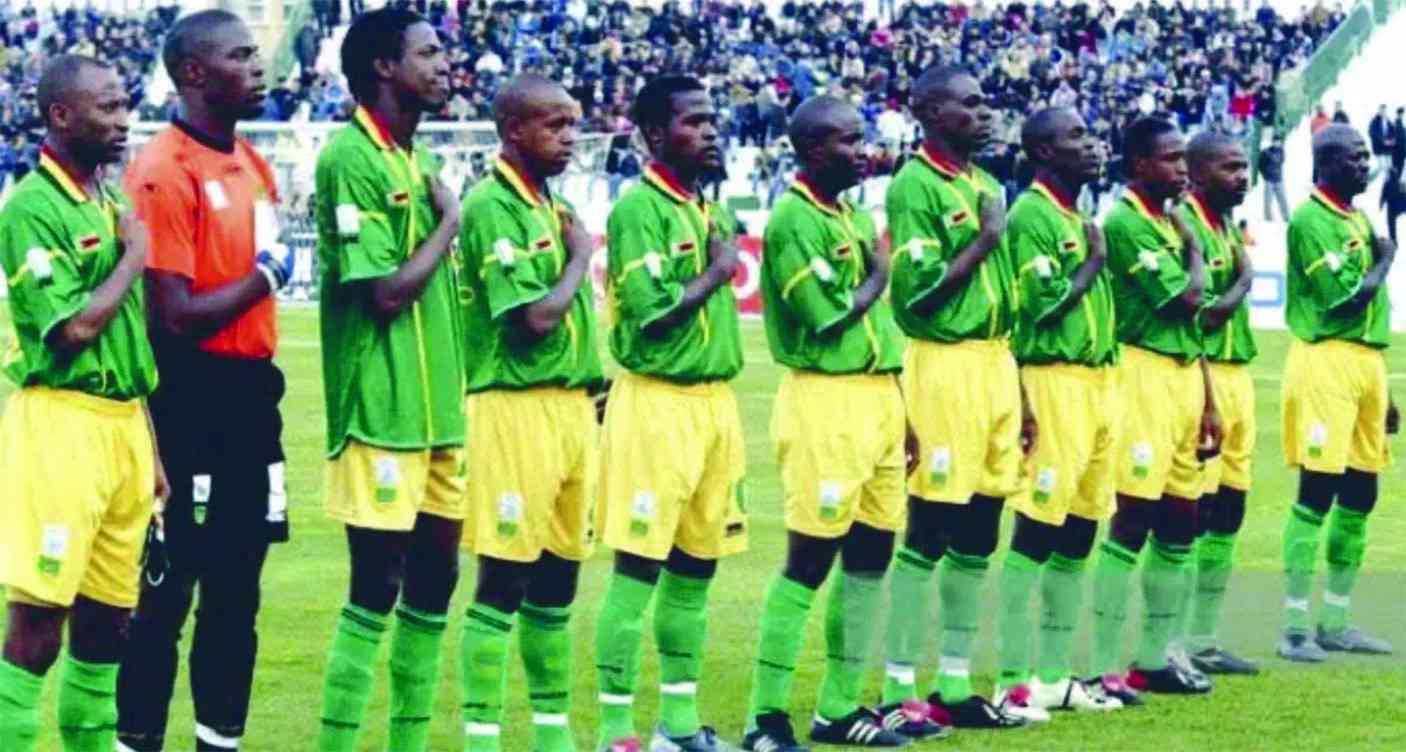
I WAS watching the film High Noon, featuring Gary Cooper, a perfect strong man of the silent type, who got things done and never complained.
When will the high moon moment of Zimbabwean sports come, for instance. Perhaps we had this during what we often hear from the likes of Charles Mabika, who speak about what was called “The Dream Team” of Zimbabwean football.
Sadly, our warriors were given a nickname that has sapped out their energy as the years have gone by. We had cricket perhaps or swimmers, who chased some Olympic gold.
We could qualify for the continental Africa games, but miss out in the Commonwealth Games. In the whispered voices, we have become a nation of ordinary people, who are perpetually thankful for something that has made them a “wasted generation”.
Someone sang in Shona, Hondo yangu ndeyengwerewere, sadza nenyama, loosely translated, “My war is to crave for clean maize or corn meal and eating the staple diet sadza and meat.” No wonder I also watched the film, Shane.
Missed opportunities, near misses
As I reflect on the cinematic parallels drawn from High Noon and Shane, I am compelled to ponder Zimbabwe’s sports landscape, which seems to mirror the poignant narratives of these classic films.
The reminiscence of what was once dubbed “The Dream Team” in Zimbabwean football, a force that embodied a promising high noon, has gradually faded.
- Letter to my people: Mthuli Ncube is mounting a dead horse
- Arbitration insights: The origins of commercial arbitration
- News in depth: Mnangagwa administration elbows out British investor under a cloud
- Letter to my people: Mthuli Ncube is mounting a dead horse
Keep Reading
The once-vibrant warriors have been burdened, God knows why, by a nickname that, over the years, seems to have drained their energy. The missed opportunities in cricket’s T20 series, near misses in Olympic pursuits, and the recurring qualification for the Africa Games, yet absence from the Commonwealth Games, prompt us to question why we dwell on these reflections.
High noon in Zim sports
In the realm of Zimbabwean sports, the concept of High Noon takes on a different connotation. We search for that moment of glory, reminiscent of Gary Cooper's silent yet strong, perfect, and resolute character.
The ordinary person in the rural, peri-urban, or urban area yearns for that single moment when our sports heroes rise above challenges and get things done without complaint.
Occasionally, the echoes of the luminary Charles Mabika’s narratives about “The Dream Team” provide a glimpse into what could have been Zimbabwe’s high noon in sports. Yet, and perhaps pejoratively in all facets of Zimbabwe’s political and social fabric, as we navigate the present, we find ourselves in a scenario more aligned with the film Shane.
Departure of sporting glory
In the concluding scenes of Shane, the main character rides off into the mountains, heading toward the setting sun. His eponymous rescue of a family from a gang of thugs leaves the audience in suspense, questioning whether the hero is mortally wounded or simply battle-weary.
The scene resonates with the current state of Zimbabwean sports, year after year, where achievements seem to fade into the sunset, leaving spectators yearning for the return of that heroic moment.
The recent lacklustre performance of the cricket T20 team against lower-ranked countries and the controversies surrounding soccer teams exemplify the departure of sporting glory.
The yearning for heroes
Thousands of young boys in the film Shane scream after their hero, desperately wanting him to return. A stark contrast emerges when we look at the sports scene in Zimbabwe.
The absence of enthusiastic reporters in press rooms, ready to shout, “come back!” to the current heroes, paints a sombre picture.
At least many in the football news has pleaded with the gifted Khama Billiat, Knowledge Musona and Kudakwashe Mahachi to be given an opportunity to come back.
I wish the press will up this tempo as I do. Who does not know that the trio are doubtlessly blessed by the soccer gods of Zimbabwe just like one Billy Antonio!
Wither our political noon?
As we pivot from the realm of sports to the multifaceted arena of Zimbabwean politics, the echoes of cinematic narratives continue to reverberate.
Drawing parallels from High Noon and Shane, we embark on a journey through Zimbabwe’s political epochs, from the Federation and Unilateral Declaration of Independence (UDI) era to Independence in 1980, the Government of National Unity (GNU) between 2009-2013 and the post-Mugabe era from 2017.
The Dream of Federation, much like the aspirations of the famous “Dream Team” in sports, which my generation and I do not even know, the Federation era in Zimbabwe’s political history envisioned a harmonious coexistence.
The dreams of a united front, however, were challenged by divergent transnational interests, ultimately leading to the dissolution of the federation. The silent strength akin to Gary Cooper’s character faced political challenges that could not be resolved without complaint.
During the UDI, under Ian Smith, the political landscape then transitioned to a period reminiscent of High Noon, for a few, where unilateral decisions echoed the unyielding resolve of a lone sheriff.
For the few privileged, the UDI somewhat marked a departure from the colonial past, a high noon moment where political decisions were made “independently”. Yet, this autonomy came with the burden of international isolation, sanctions and internal strife, akin to the lone hero facing external threats.
A critical point was the NIBMAR principle, which meant that there was “no independence without majority rule”.
Put simply, independence without freedom is not independence. This is why the majority fought, including under various arms, such as Zipra and Zanla, and the masses like our mothers in the seniors, boomers, and busters’ generations.
During Zimbabwe’s Independence, I don’t know whether it was from Smith regime or Britain, Zimbabwe’s attainment of independence brought forth what was supposed to be a new dawn, akin to the concluding scenes of Shane.
The main character, having achieved a miraculous rescue, rides toward the setting sun, leaving the audience in suspense. A lot of cadres who were on the front and rear of the real struggle have been suffering from post-traumatic stress disorders (PTSD) for 43 years now.
These are the war collaborators, the detainees and restrictees, who form the rural poor of Zimbabwe. Similarly, the post-independence era in Zimbabwe was characterised by hope for some Jewel of Africa, yet the uncertainty lingered.
The departure of colonial forces gave rise to a momentous occasion, but the shadows of challenges loomed large. This took the country to Entumbane and Second Gukurahundi killings in the early 1980s. The first Gukurahundi had failed in 1978 among the warring parties.
The script continued in the chaotic fast-track land reform, the June 2008 presidential runoff bloodbath, the August 1, 2018, killings, the 2019 assault of protesters, and the recent wave of abductions and torture.
The GNU era echoes the nuances of political compromise, much like the intricate plots in the classic films above. The unity sought to overcome challenges, with political protagonists navigating a delicate balance.
However, the ultimate departure from this unity left a void, reminiscent of the departure scenes in Shane, leaving Zimbabweans yearning for a sustained era of political stability.
The opposition thought citizen sympathy of 2008 would win them seats in 2013. The burden of providing the residue of evidence of electoral manipulation was shifted to the opposition in 2018.
Predictably, the removal of Mugabe, who could have easily lost under the mantra “Mugabe is old”, was clothed with an apparel of a popular uprising and a citizen open entrance to the State House.
The public ignored the deleterious effects of the political game plays that renewed Zanu PF. Predictably, in the post-Mugabe era, Zimbabwe finds itself at a crossroads.
The departure of the longstanding political figurehead that was Mugabe, akin to the silent departure in Shane, raises questions about the nation’s political future.
The recent controversies and challenges relating to presidential legitimacy, akin to the lacklustre performance in Zimbabwe’s T20 cricket, underscore the need for a renewed political high noon — a moment when political heroes rise above challenges and lead the nation without complaint.
The Mandela effect
Well, I forgot to explain the Nelson Mandela effect early on, but here it is. Mandela effect, is a phenomenon where a large group of people collectively mis-remembers an event, finds an intriguing place in a society’s collective memory, albeit as a false memory.
For Zimbabwe, it is an example of cognitive dissonance by each generation of Zimbabweans from the war years to date and offers insights into the complexities of historical recollections and their impact on the nation’ psyche.
Psychologists have coined it from how, Nelson Mandela, renowned freedom fighter and anti-apartheid hero, spent 27 years in prison, creating a tale of resilience and hardship.
However, his touching story is often distorted in collective memory, as many people recall Mandela’s death in prison during the 1980s. In reality, Mandela lived after prison and even became South Africa’s president between 1994 and 1999 until he passed on in 2013 aged 95 years.
Some, during my conversations with them, tried to craft a theory that he was another Mandela who is not the original Mandela, who served prison time at Robin Island Prison.
Its effect in Zim collective memory
The Mandela effect manifests in various ways within Zimbabwean collective memory. Analogous to the mis-remembering of Mandela’s death in the 1980s, Zimbabweans grapple with their own historical recollections.
The complexities of the Federation, UDI and independence often lead to divergent narratives where shared memories become entangled with individual perspectives, contributing to a blurred collective history.
The Mandela effect introduces a cognitive dissonance, where the collective memory of the struggle for independence and the affluence during Smith’s time are contrasted by time witnesses, creating a dynamic tension between perception and historical actuality.
Like the departure of Shane in the film, the Mandela effect creates blurred lines between reality and mis-remembered collective memories from Mgagao Declaration in the 1970s that catapulted Mugabe, Operation Sovereign Legitimacy in 1998 that brought liberation movements together, to Operation Restore Legacy in 2017 that renewed Zanu PF from the abyss of political oblivion.
In all this, we need a cautious approach in understanding presidents and political figures in Zimbabwe, particularly in a context marked by political hierarchies and declarations of godfatherism.
- Hofisi is a lawyer, conversationalist and trans disciplinary researcher. He has interests in governance and international law. — [email protected]






